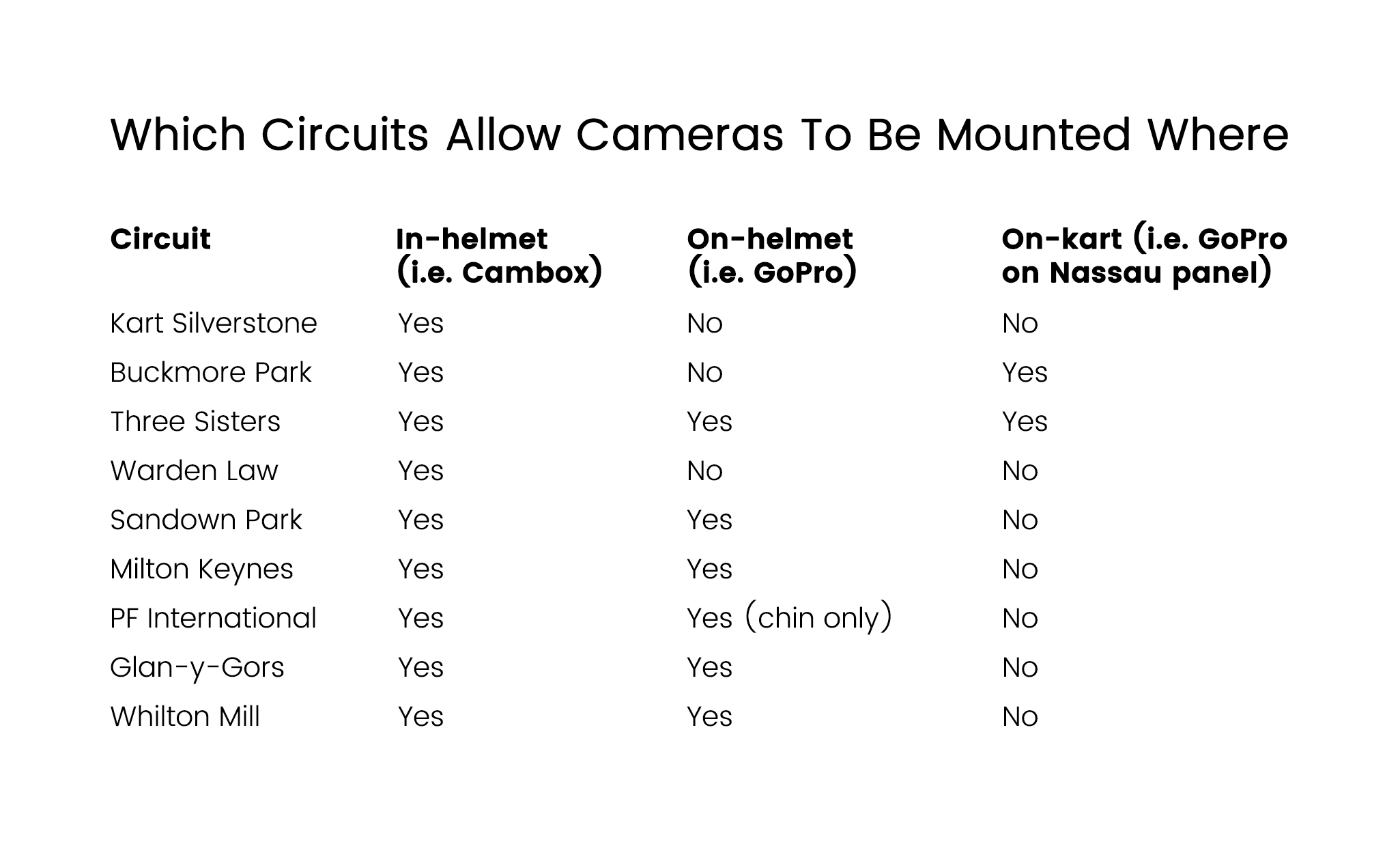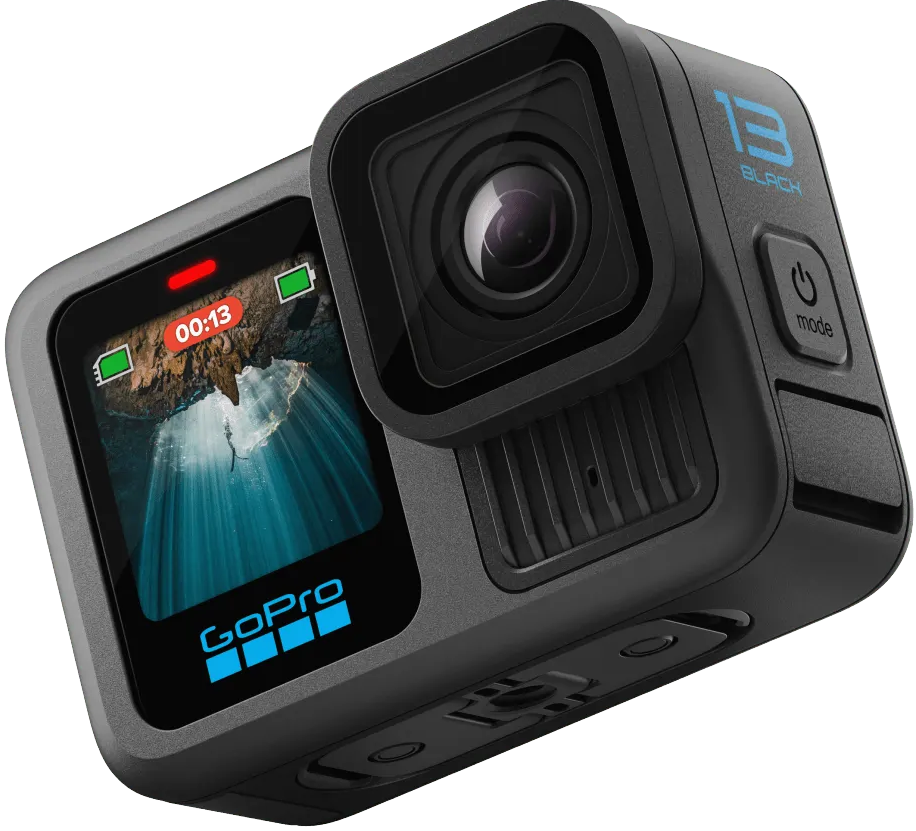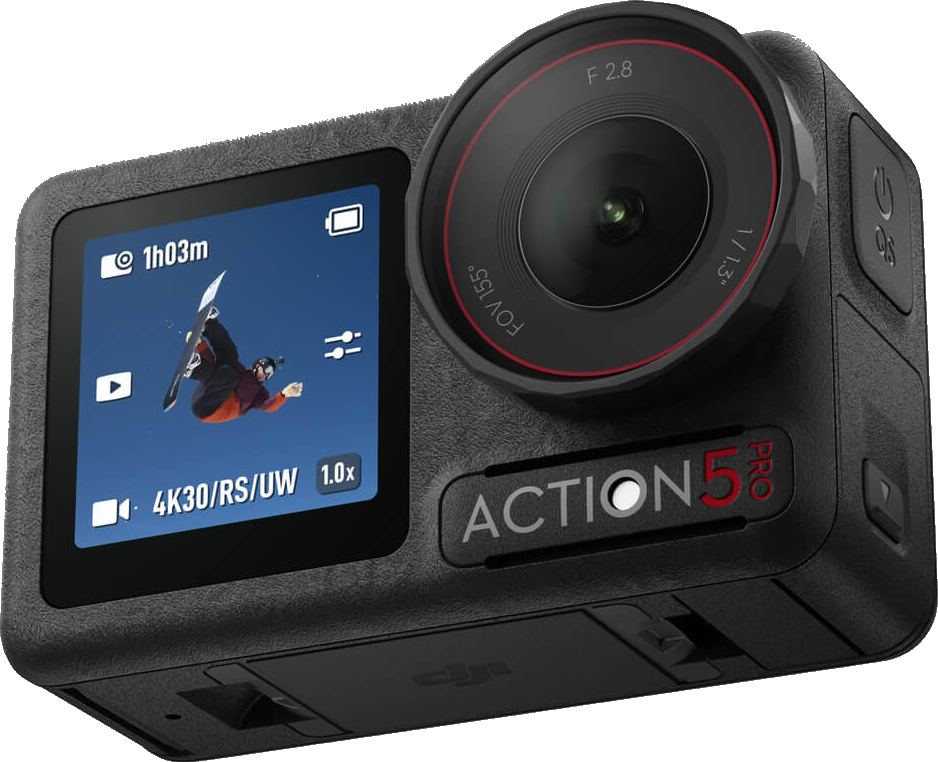Onboard Cameras
The EKS strongly recommends that drivers either purchase, hire or borrow onboard cameras to film their races in the EKS. This not only allows drivers to watch back their races after each event but this also allows drivers to use their onboard footage to file appeals for or against any penalties free of charge.
Detailed below is a list of which EKS circuits allow each type of onboard camera and which cameras the EKS advises purchasing.
Recommended Onboard Cameras
GoPro’s latest Hero13 Black model
DJI’s latest Action 5 Pro model
On-helmet
On-helmet cameras are the most common and popular form of onboard camera.
GoPro are the innovators of these forms of cameras and they can be mounted to crash helmets using either strap-on chin mounts or adhesive mounts.
Recommendation
For drivers who are looking to purchase an on-helmet camera, the EKS would recommend purchasing any GoPro from the HERO7 Black (2018) model onwards as these feature GoPro’s market leading HyperSmooth technology, or a DJI Osmo Action camera as a GoPro alternative.
For the perfect camera angle, these cameras are best mounted using a strap-on chin mount and extension arms. These mounts are both removable and movable whilst giving the most similar point of view to what is seen by the driver.
Multiple circuits however do not allow cameras to be mounted to the exterior of crash helmets for safety reasons with some circuits instead allowing these cameras to be mounted to their karts.
In-helmet
In-helmet cameras are a relatively new form of onboard camera which are small enough to be mounted inside a crash helmet and are allowed at all circuits.
Cambox are the innovators of the in-helmet camera market with the V3 Pro being their latest and leading model. Although not specifically designed to be mounted inside a crash helmet, Insta360’s GO range of cameras have recently become the go to in-helmet camera.
Recommendation
For drivers who are looking to purchase a camera designed specifically to be mounted inside a crash helmet, the EKS would recommend purchasing a Cambox V3+ (2023) or an Insta360 GO 3 (2023). The EKS would not recommend purchasing the older Cambox V4 Pro (2020).
This is because the Cambox V4 Pro’s microphone cannot cope with loud noises and the V4 Pro does not record for 2.5 seconds every 5 minutes. The newer V3+ does not suffer from either issue. Both cameras are capped at 1080p when filming in more than 30fps and hence the EKS would recommend filming in 1080p 60fps with both cameras.
Insta360 GO
Insta360 produce a range of GO cameras which are small enough to be mounted inside a crash helmet. Although not be designed specifically to be mounted inside a crash helmet, these cameras produce footage superior to that of a Cambox.
The EKS recommends specifically purchasing an Insta360 GO 3 (2023) for drivers looking to purchase an in-helmet camera. We would advise filming in FreeFrame mode and in 1440p 50fps.
Recommendation
We would not recommend purchasing the Insta360 GO 3S (2024) due to issues with its FreeFrame mode and its inferior battery life.
As with a Cambox, Insta360 GOs are best mounted to the underside of the visor opening using a modified version of the hat clip which comes with the camera. Alternatively the camera can be mounted to the front of the side padding of the helmet using magnets as the Insta360 GO has a magnetic backing.
On-kart
At Buckmore Park cameras are not allowed to be mounted to the exterior of a crash helmet for safety reasons however they are allowed to be mounted to the Nassau panel of a kart.
Please note that mounting a camera to the Nassau panel of a kart does not give a point of view similar to what the driver sees and hides all steering and pedal inputs. It typically produces shaky footage with rattly audio which is best combated by using a camera with high-level in-built stabilisation.
For this reason the EKS recommends purchasing an in-helmet camera as apposed to a GoPro-style camera as in-helmet cameras can be used at all circuits without a reduction in footage quality.






